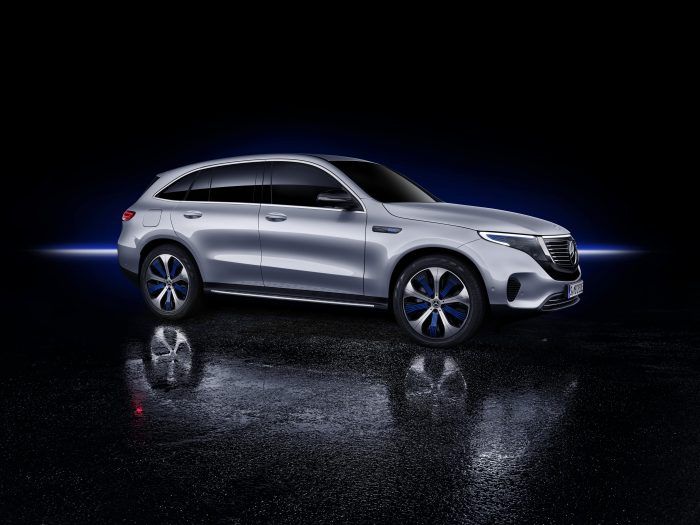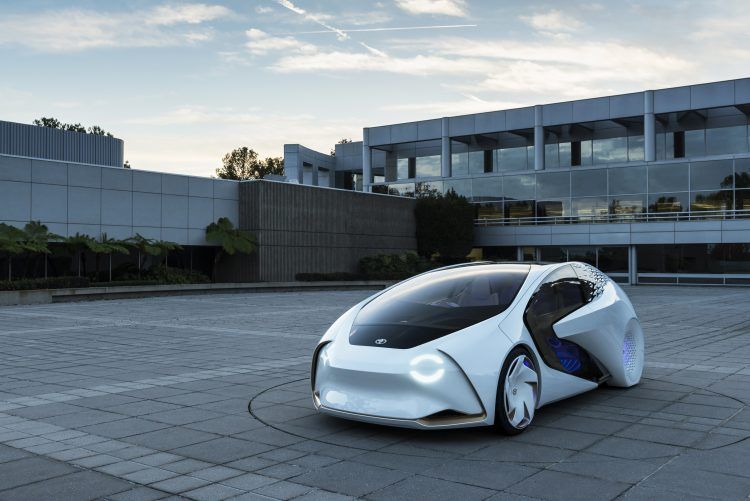- Some of the most significant trends in the automotive industry are also the most interesting.
- Ridesharing and Artificial Intelligence rank high but consumers still want comfort and convenience.
- In the United States, many worry about their pets when traveling; in Germany, electrification is key.
Beyond backup cameras, consumers around the world are asking automakers to expand their offerings and add on-the-go convenience. From enhanced entertainment options to extra comfort for our four-legged family members, consumers in leading automotive nations like Germany, the United States, and Japan are seeking unique vehicle features and driving the future of automotive development.
Here is a look at some of the most popular auto trends around the world.
United States: Pets Come First
Pet seat covers. Canine car seats. Doggy steps. In the U.S., many consumers are letting their dogs determine their next ride. In fact, U.S. drivers are 36 times more likely to purchase a car based on a pet’s needs than their German counterparts, and ten times more likely than Japanese consumers.
Equally important to pet comfort is pet safety. Earlier this year, Volvo released a report called Dogs, Cars and the People Who Love Them in conjunction with a Harris Poll that found more than a third of Millennial pet owners are concerned about driving with their pets.
“Our survey showed that pet parents want to travel with their furry friends, but worry about safety,” explained Jim Nichols, Product and Technology Communications Manager, Volvo Car USA. “Overall, there is an awareness opportunity among pet parents.”
Related: The science behind keeping your pets safe in the vehicle.
United States: Connectivity & Automation
But making the biggest splash on the U.S. automotive market is connectivity. Having already infiltrated the industry through ridesharing apps like Uber and Lyft, connectivity is now influencing how automotive manufacturers are developing vehicles.
In fact, many manufacturers are trying to get the jump on the next evolution of this trend by tying self-driving and ridesharing together. General Motors is currently beta testing self-driving Chevy Bolts for ridesharing purposes in San Francisco with plans to fully launch the initiative in 2019. And, in the coming months, Google’s Waymo is expected to invade major cities with an armada of self-driving Chrysler Pacifica taxis.
By merging autonomous driving and ridesharing, it appears U.S. automakers and tech companies may be able to keep consumers connected while continuing to innovate.
Related: Six key consumers demands facing the auto industry today.
Germany: Bluetooth & Electrification
Spurred by a 2010 initiative to convert all television and radio services to digital, German drivers have advanced Bluetooth capabilities on their minds. Interest in digital audio broadcasting (DAB) – the process of analog-to-digital audio conversion for AM or FM transmission – is increasing. In turn, automakers are highlighting DAB as a key feature, and have developed a Steering Board consisting of automakers, government officials, and media to discuss how they can amplify awareness and adoption of DAB nationwide.
The wish list for German drivers doesn’t stop at better Bluetooth, though. The country continues to invest in electric vehicles and anticipates the market to reach a whopping 40 billion euros (45.4 billion U.S. dollars) by 2020. The number of new electric passenger vehicle registrations rose by 178 percent in May 2017 alone. Cliff Banks, President and Founder of the Banks Report, refers to the electric vehicle trend as the “Elon Factor.”
“Automakers don’t want to be left behind in the push for global electrification,” he said. “The ‘Elon Factor’ shows that consumers will buy electric vehicles even without a service infrastructure in place.”
Related: Where are EVs most popular? The results of this study might surprise you.

The 2020 Mercedes-Benz EQC is the first in the automaker’s “EQ” or “Electric Intelligence” product line. The EQC has two electric motors at the front and rear axles, with a combined output of 402 horsepower. Total range is around 200 miles. Photo: MBUSA.
Japan: Comfort & Going The Extra Mile
The comforts of home in the car? In Japan, many consumers are converting cars into mobile living rooms. Some of the top search terms for Japanese consumers include “car cushion,” “car curtain,” “car humidifier,” and “car refrigerator.” Yes, a car refrigerator! Talk about a home-away-from-home experience. In developing future models, Japanese automakers are trying to cater to consumer interests and stay ahead of the competition.
Additionally, they’re hoping that a reputation for service at the dealership level will keep future sales brisk – a key shortcoming for American automakers looking to gain Japanese market share.
“Dealerships in Japan do offer a higher level of hospitality and service to their customers, although U.S. automakers haven’t invested in their dealer networks in Japan,” Banks said. “It’s a costly endeavor and coupled with the fact that Japanese citizens buy smaller vehicles, which are less profitable for U.S. automakers, it’s tough to make the case to invest significantly in the retail network.”
Japan: AI Comes Along For The Ride
Taking comfort to a whole new level through intelligent, friendly, helpful design, Toyota teased its Concept-i vehicle last year. Marketed as “Less of a machine. More of a pal,” Concept-i allows drivers to enjoy AI capabilities, known as “Yui.” The technology gets to know drivers by sensing their daily routines, driving patterns, and even emotions.
While it’s not expected to hit the market for a few years yet, it’s a sign Toyota is listening to consumers and thinking ahead.
“At Toyota, we recognize that the important question isn’t whether future vehicles will be equipped with automated or connected technologies,” said Bob Carter, Senior Vice President, Sales, Toyota Motor North America. “It is the experience of the people who engage with those vehicles. Thanks to Concept-i and the power of artificial intelligence, we think the future is a vehicle that can engage with people in return.”
Related: AI & auto safety: reality versus fantasy.

Toyota’s Concept-i debuted at the 2017 Consumer Electronics Show in Las Vegas. Photo: Toyota Motor Sales, U.S.A., Inc.
Future Considerations
It’s interesting to see what’s trending around the globe, and how cultural shifts outside the car impact what’s going on inside the car. While each country has their own trends, there’s one thing in common: consumers are driving these trends more and more. No matter the country or generation, this is something we’ll continue to see for years to come.
Scott McLaren is the Chief Marketing Officer of Fortegra Financial Corporation, a Tiptree Inc. company. He once flew the Saturn VUE Lightship and awarded a Saturn Sky to Travis Pastrana for the first double back flip in the history of the X Games.
https://www.automoblog.net/2018/12/03/auto-trends-around-the-world/


No comments:
Post a Comment